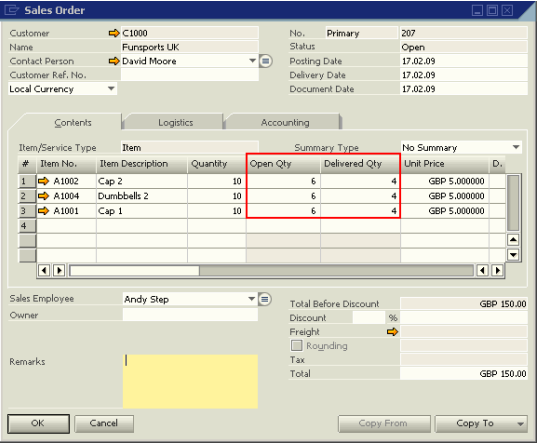Here are some tips and tricks that dive deeper into the reports module that can help you save time, work more efficiently and get the most out of your system

Many small businesses struggle with the complexities of generating accurate and timely reports from company data. Few report generation tools have both the ability to gather the correct data and the flexibility needed to put that data into a useful format. Businesses are forced to export data into various applications and then piece that data together to create reports that can be out-of-date the moment they are created.
SAP Business One provides a series of predefined, built-in reports that you can analyse in various ways by using the selection and sort functions. Navigating in a report enables you to quickly access the underlying detailed information that in contains – You can print, e-mail, or export any report to Microsoft Excel right from the system.
Whether you’re new to SAP Business One or a long-time user, here are some tips and tricks that dive deeper into the reports module that can help you save time, work more efficiently and get the most out of your system:
- Schedule Report Execution and Mailing
You schedule report executions by running queries and specific receipts of the generated reports. The receipt either obtains the reports via email or views them directly in SAP Business One as a user.
Available formats of generated reports found in SAP Business One include PDF, HTML, and XML. You can also access these reports via email, as an attachment - reports in HTML format can also be sent as the email message body.
The following situations are the main triggers for setting up report execution schedules:
- You cannot or do not want to wait a long time for a report to be executed.
- You need to obtain data of certain reports on a regular basis.
- You have no immediate access to SAP Business One, either frequently or for a long time.
- You want to compare the different results of one report executed at regular intervals.
Read on to find out more about the report scheduling function of SAP Business One.
- Price Report Details
Ever wondered about the details behind the price discount? A Price Report option is available, and can be accessed from the price field in the document. When you generate this report, it displays all prices, their sources and details, based on the defined selection criteria.
The automated report saves time and provides greater control over business costs with full visibility into expenses and pricing options.
This how-to guide shows the information regarding the pricing and discount rules, explaining the value populated in the document line.
- Back order Processing
You use back order processing to track customer sales orders received for which the inventory has not yet been shipped. Normally, this occurs when the available quantity is insufficient to fill the order. The back order process lets you check how much is missing, and once the inventory is replenished, you can ship the required quantity to your customers.
When you receive information on a back order, handle it in one of the following ways:
- Deliver the necessary quantity to the customer.
- Update the quantity (after the delivery has been shipped).
- Close the remaining open quantity for the row.
Thanks to timely and accurate reports you can schedule and define automated distribution to selected recipients, saving time and better decision making.
This guide shows how to see the remaining quantities to be delivered to the customer.
- Excel Report and Interactive Analysis
Excel Report and Interactive Analysis is a solution that provides a report designer and predefined reports. In the report designer, you can design and manage Excel reports and pivot tables on the Excel Report and Interactive Analysis tabs, respectively. When you utilise its exclusive functions together with standard Microsoft Excel features, the Excel report and interactive analysis designer enables you to create reports in an intuitive way based on semantic layers.
In addition, by leveraging the SAP in-memory computing technology, it provides real-time computing for your reports, giving you improved access to your data.
Read the step-by-step process on how to launch the Excel Report and Interactive Analysis Designer.
For more information about working with the Crystal Reports software, version of the SAP Business One Application, see the Tips and Tricks for SAP Business One page. It offers an assortment of documents to learn essential shortcuts to improve your everyday usability and productivity.



